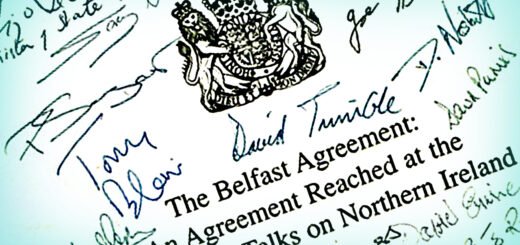The Global Festival: San Fermin
Celebrations of the festival have its origin in the combination of two different medieval events. Commercial secular fairs used to organize at the beginning of the summers. The cattle merchants used to flock the city with their animals eventually leading to the organizing bullfighting as a part of the tradition. Specifically, they were recorded in the 14th century. On the other hand, religious ceremonies honouring the saints were held on 10th Oct. However, in 1591 they were transferred to 7 July to take place at the same time as the fair, when Pamplona’s weather is better. – Abhinav Kaushal*
We all love watching Zindagi Na Milegi Dobara, especially the climax scene where all the three protagonists are running away from the bulls and in the background, there is a mesmerizing poem of Javed Akhtar, which left us all glued to that scene. Well, most of don’t know what is the name of that festival. We all call it bull running but actually, it is known as San Fermine.
San Fermin, also known as San Fermines, is a week-long, historically rooted celebration and one of the most popular festivals of Spain, which annually takes place only in the city of Pamplona. This is the annual Spanish festival celebrated in the honour of San Fermine de Amiens. The festival started at 12 noon on 6th July with the setting of the rockets or chupinazo (in Spanish) from the balcony of the Pamplona’s Municipal Corporation’s office, till midnight of 14th of July with a farewell song Pobre de mi. One of the most famous activities in this festival is the Encierro, or the running of the bulls, which happens at 8:00 AM from the 7th of July to the 14th July, the festival involves many other traditional and folkloric events. Over 1,000,000 people come to participate in this festival.
It is said that the celebrations of the festival have its origin in the combination of two different medieval events. Commercial secular fairs used to organize at the beginning of the summers. The cattle merchants used to flock the city with their animals eventually leading to the organizing bullfighting as a part of the tradition. Specifically, they were recorded in the 14th century. On the other hand, religious ceremonies honouring the saints were held on 10th Oct. However, in 1591 they were transferred to 7 July to take place at the same time as the fair, when Pamplona’s weather is better. This is considered to be the beginning of the Sanfermines. During medieval times acts included an opening speech, musicians, tournaments, theatre, bullfights, dances or even fireworks. Bull running came into existence during 17th-18th-century chronicles together with the presence of foreigners and the problem of public brawls and misbehaviour during the festival were taken concerned. As a result of which first bullring or arena where bullfight takes place was constructed in the year of 1844.
The worldwide fame of this festival came into existence with the book of Ernest Hemingway’s The Sun Also Rises where he made some reports as a journalist. He was fascinated when he first visited in 1923 and returned many times until 1959. Hemingway was also deeply fond of bull runnings and bullfights, but he did not participate in the running. Not only writers were excited but actually many filmmakers and TV series directors are still excited about this festival. This festival has been shown in the movies like Zindagi Na Milegi Dobara (You’ll Not Get an Another Life), an Indian movie which was released in 2011, Running with the Bulls (2012), Viva Pamplona! Viva San Fermin! (2003), not only this but TV series like CuentameComoPaso (Tell me What Happened) showed in one of its episode San Fermine. I don’t know there are innumerable documentaries on San Fermine.
San Fermin constitutes of not only bull running but of various events which are further classified as daily events and single day events. The single day events include Chupinazo, Riau-Riau, Saint Fermine procession, El Estruendoand final Pobre de mí. The opening of the festival marked with the setting of rockets or chupinazo at 12 noon on 6th July from a city hall balcony with thousands of people celebrating the act in the city hall square and other locations in Pamplona. Thechupinazo has officially marked the beginning of the fiesta since 1941. The person who sets it off is decided by the city mayor. Nevertheless, since 1979 tradition has been that each year after city elections the chupinazo is set off by a person from the different city council political groups beginning with the mayor and the political groups ordered by a number of representatives. There have been exceptions to this tradition with some non-politicians being in charge of the act when they had performed significant achievements during the year. Examples of these exceptions were a player of the local football team or the president of the “giants and big-heads” group in its 150 years anniversary. The Riau-Riau used to take place on 6th of July where all the members of the city council used to parade. The first parade took place on 6th July 1911. But it was removed in 1992 for the sake of public activists and political parties. As they used this day as a platform for promoting their interest and hence creating a public nuisance. Protesting youths would often block the way and it often took up to five hours for the city councillors to walk the 500 meters to the Saint Fermine chapel. Nevertheless, in recent years it has been held unofficially without the participation of the members of the city council. In 1996 and 2012 there were two failed attempts to restore the original act with the participation of the city council, both of them being cancelled due to the violent clashes with some participants. The key day of this festival is Saint Fermine procession when the statue of San Fermines (dated back to 15th century) is accompanied by the thousands of people and passed throughout the old parts of Pamplona. During the procession, Jota, a traditional dance is performed for the saint a rose is offered in the Saint Fermine well, and the “Gigantes” (enormous wood-framed and Papier-mâché puppet figures managed from inside) dance and twirl while the cathedral bell named María (Mary) peals. Another popular event of this festival is El Estruendo (The Roaring). The event was started in 1964 when the group of people of Peña Irrintzi came out of their house in the late night and started to make sounds with drums, crackers, and trumpets. It has been purposely left outside the official program and each year is celebrated on a different day, usually on a weekday so as to keep the crowds manageable. People gather at 11:59 pm at the Town Hall and make as much noise as possible for several hours mainly with drums but also bowls, whistles or any other objects.
The daily events include Running of the Bulls, which we have seen in many TV programmes, movies, and documentaries where thousands of people started running 825 meters of a narrow stretch of old streets of Pamplona, chased by the six bulls. The run ends in the Pamplona’s bullring taking a mean time of around 3 minutes where the bulls would be held until the afternoon’s bullfight when they would be killed. Bull runs are held between 7 and 14 July and a different “encaste” (sub-breed) of bull appears each day.The event begins at 8 a.m. when a first firecracker is lit to announce the release of the bulls from their corral. Before the year 1924, it started at 6 and at 7 between 1924 and 1974. The runners gather earlier at the starting line asking protection from Saint Ferminewhich has been placed in a raised niche in a wall: “To San Fermine we ask to be our patron saint and to guide us in the running of the bulls, giving to us his blessing.” The event is dangerous. Since 1925, 15 people have been killed during the event –– most recently on 10 July 2009and every year between 200 and 300 people are injured during the run although most injuries are contusions due to falls and are not serious. Every day, during the morning, there is a parade of giants and big heads. This parade has been celebrated from past 150 years. The other daily events include basque traditional sports which include stone lifting, wood cutting, and hay bale lifting, which is celebrated every morning in Plaza de Los Fueros, bullfighting, which took place in every afternoon on 6th July to 14th July and at last every night at 23:30 fireworks take place. This week-long festival ends on 14th July where thousands of Pamplonian meets in the City Hall Plaza, singing the traditional mournful notes of the Pobre de Mí (‘Poor Me’), in a candlelit ending. The city mayor closes the festival with participants lighting a candle and removing their red handkerchief as the song is played by the local band, followed by a fireworks display at the city hall. This closing ceremony tradition started out in the 1920s.
San Fermines is really one of the most famous and interesting festivals of Spain, where not only Spanish crowds flocked upon but it sees international crowds as well. Thousands of people from all over the world come to see and enjoy this centuries old festival and witness the rich culture of Spain. Do you know only 267 days are left? Only 267 days! So pack your bag and head towards the Pamplona

*Abhinav Kaushal is a scholar from Instituto Cervantes – New Delhi and a frequent columnist on Spanish Culture and heritage
The views and opinions expressed in this article are those of the author and do not necessarily reflect the views of The Kootneeti Team.


















